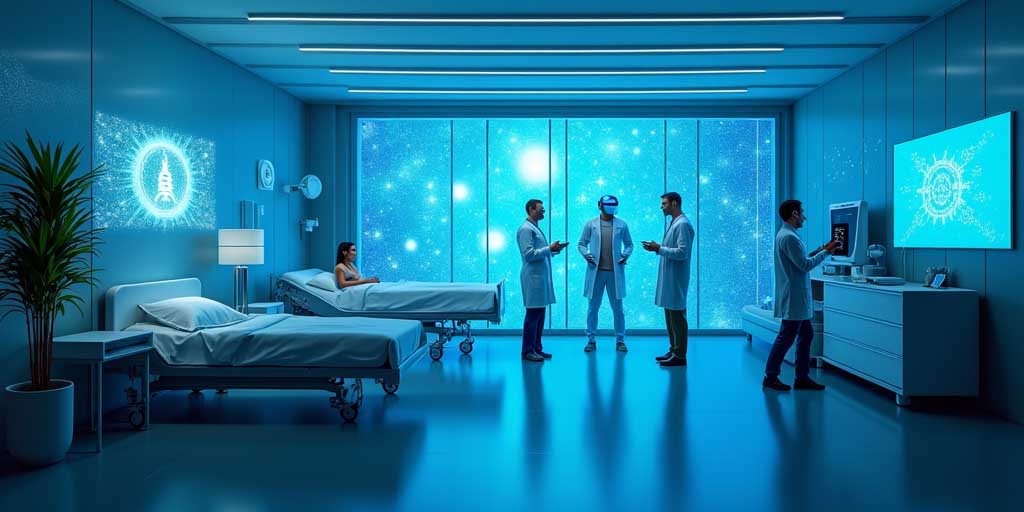The 2025 Healthcare Innovations Revolutionizing How We Care for Patients
The healthcare industry is undergoing a transformation, driven by rapid advancements in technology and a growing understanding of patient needs. As we move deeper into the decade, several groundbreaking innovations are setting the stage for a revolution in patient care by 2025. These developments are not only enhancing the efficiency and effectiveness of healthcare delivery but are also significantly improving patient outcomes and experiences. In this blog post, we’ll explore some of the most impactful healthcare innovations that are changing the landscape of patient care in 2025.
1. Personalized Medicine Powered by Genomics
One of the most significant shifts in healthcare is the move towards personalized medicine. Advances in genomics have made it possible to tailor treatments based on the individual genetic profiles of patients. This approach ensures that patients receive the most effective treatments with minimal side effects. For example, in oncology, genetic testing is now routinely used to identify the specific mutations in cancer cells, allowing oncologists to select therapies that specifically target those mutations. This level of personalization not only maximizes treatment efficacy but also minimizes harmful side effects, leading to better patient outcomes.
2. AI and Machine Learning in Diagnosis and Treatment
Artificial intelligence (AI) and machine learning are playing pivotal roles in transforming diagnostic processes and treatment protocols. AI algorithms are now capable of analyzing vast amounts of medical data, including medical images, faster and more accurately than ever before. For instance, AI-driven diagnostic tools can detect abnormalities in X-rays and MRIs with a precision that rivals or exceeds that of human radiologists. Moreover, machine learning models are being used to predict patient risks and outcomes, enabling proactive management of diseases. These AI systems are not only speeding up the diagnostic process but are also helping in crafting personalized treatment plans that are data-driven and precise.
3. Telemedicine and Remote Monitoring
The COVID-19 pandemic accelerated the adoption of telemedicine, and by 2025, it has become a mainstay in healthcare delivery. Telemedicine platforms are now more sophisticated, offering not just virtual consultations but also remote patient monitoring capabilities. Patients with chronic conditions such as diabetes and heart disease are benefiting immensely from wearable devices that continuously monitor their health and transmit data in real-time to their healthcare providers. This constant monitoring allows for timely interventions, potentially preventing emergency situations and hospitalizations.
4. Robotics in Surgical Procedures
Robotic technology has revolutionized surgical procedures by enhancing precision and reducing recovery times. In 2025, robotic-assisted surgeries have become more common, helping surgeons perform complex procedures with enhanced accuracy and minimal invasiveness. For example, robots are used in orthopedic surgeries to place implants with perfect alignment, which is crucial for the success of the surgery and the speed of recovery. Similarly, in neurosurgery, robots assist in performing intricate procedures that require high precision, reducing risks and improving outcomes.
5. Virtual Reality in Patient Therapy and Rehabilitation
Virtual reality (VR) technology has found a unique application in the field of patient therapy and rehabilitation. VR platforms help simulate real-life scenarios that can be used for therapeutic purposes, especially in mental health treatment and physical rehabilitation. For instance, VR is used to create calming environments for patients with anxiety disorders or PTSD, providing them with coping mechanisms in a controlled setting. In physical rehabilitation, VR assists in creating interactive scenarios that encourage patients to practice movements and exercises, making rehabilitation engaging and effective.
6. Bioprinting for Tissue and Organ Fabrication
A groundbreaking innovation in healthcare is the development of 3D bioprinting technologies capable of creating living tissues and organs. This technology has the potential to solve the chronic shortage of organ donations by allowing the fabrication of organs tailored to the patient’s own cells, thus reducing the risk of rejection. In 2025, bioprinting has started to see practical applications, particularly in creating skin grafts for burn victims or cartilage for joint replacements.
Conclusion
The healthcare innovations of 2025 are revolutionizing how we care for patients, making healthcare more personalized, efficient, and effective. From the genetic tailoring of treatments to the use of AI in diagnostics, and from telemedicine to advanced surgical robotics, these technologies are significantly improving patient outcomes and reshaping the future of healthcare. As these technologies continue to evolve and become more integrated into everyday medical practices, the potential for even greater advancements and improved patient care is boundless.
